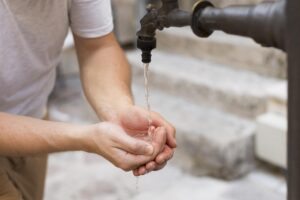Water as a Treatment for Health Through Community Projects
Various initiatives are emphasizing the importance of access to clean water as a foundation for good health.

Access to safe drinking water is considered a basic right and a responsibility of governments. However, in recent years, community partnerships, social organizations, and private foundations have begun transforming the relationship between water, health, and the environment in the face of increasing scarcity of potable water across many regions of the world.
In rural communities and vulnerable neighborhoods—where state infrastructure is either insufficient or nonexistent—water is not only a vital resource but also a therapeutic, preventive, and social agent for health.
From natural purification to medicinal use, several projects in Latin America are demonstrating that water can play an active role in medical treatments and serve as a tool to improve quality of life, especially when combined with environmental education and preventive medicine.
Water as a Tool for Holistic Well-Being
Access to safe water is one of the most decisive factors for human health, making it a fundamental right. Yet, according to the World Health Organization, more than two billion people around the world still lack it.
The absence of this basic resource not only increases the risk of infectious diseases but also worsens malnutrition, poverty, and inequality—a reality that becomes even more severe in the most vulnerable territories, where sanitation infrastructure is precarious. In such contexts, water quality can mean the difference between life and death.
But access to water is not only preventive—it is also restorative. The relationship between water and health extends beyond hygiene and hydration; it encompasses physical, mental, and social well-being.
From therapies based on contact with natural water sources to sanitation projects that regenerate ecosystems and communities, water functions as an integrative force. Local initiatives and solidarity-based partnerships are proving that caring for water is also a way of caring for community health.
In the Calchaquí Valleys of Argentina, where natural water sources are often contaminated with arsenic or bacteria, access to safe water has significantly reduced childhood diarrhea and skin diseases thanks to programs supported by private donations.
However, the focus extends beyond merely providing drinking water—it also involves using water as an instrument of social cohesion and community health promotion, emphasizing local knowledge, environmental education, and simple technologies.
Healing Through Water: Local Wisdom and Innovation
One example of this approach is the work of the Manantial Vivo Foundation in Colombia, which since 2016 has promoted the recovery of natural springs and the practice of community hydrotherapy.
Inspired by traditional Andean medicine and European balneotherapy techniques, local promoters teach residents to use water through thermal baths, compresses, and washes to relieve muscle pain, improve circulation, and strengthen the immune system.
The program blends this traditional wisdom with environmental sanitation efforts, including reforestation of water sources and the construction of family biodigesters—linking physical health to the health of nature itself.
Another emblematic example comes from Paraguay with H2O para la Vida (H2O for Life), supported by private donations and local universities. This project delivers portable purification technology to indigenous and rural communities, using ceramic filters with silver nanoparticles and rainwater harvesting systems adapted to local homes.
Through participatory workshops, residents also identify and analyze pollution sources and develop plans to reduce waste and maintain clean catchment areas.
These programs show that sustainable public health solutions can emerge from collaboration among science, communities, and social funding—without depending solely on state policies.
A Shared Vision: Health and Environment as One
The common thread across all these initiatives is the recognition that human and environmental health are inseparable. The WHO refers to this as the “One Health” approach—but in these communities, the concept takes tangible form through actions such as building sustainable wells, teaching hygiene practices, restoring springs, and restoring water’s value as a source of life and care.
In many cases, the most successful interventions do not rely on large budgets but rather on small donations, volunteer work, and local commitment, often supported by private contributions.
These experiences make clear that access to safe water is not merely a health indicator but an essential expression of human dignity. When a community can drink, heal, and share clean water, it also recovers its self-esteem and autonomy.


